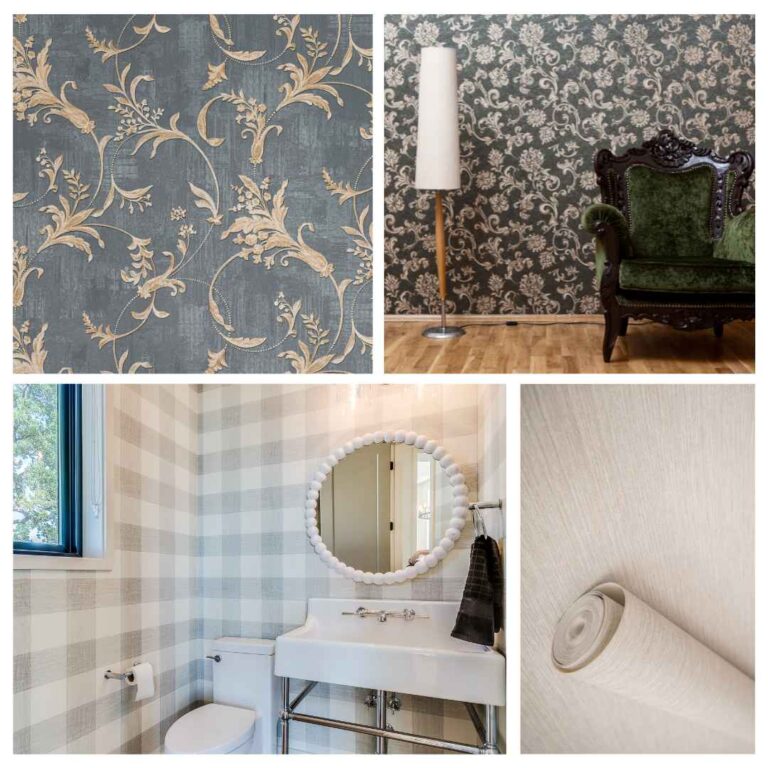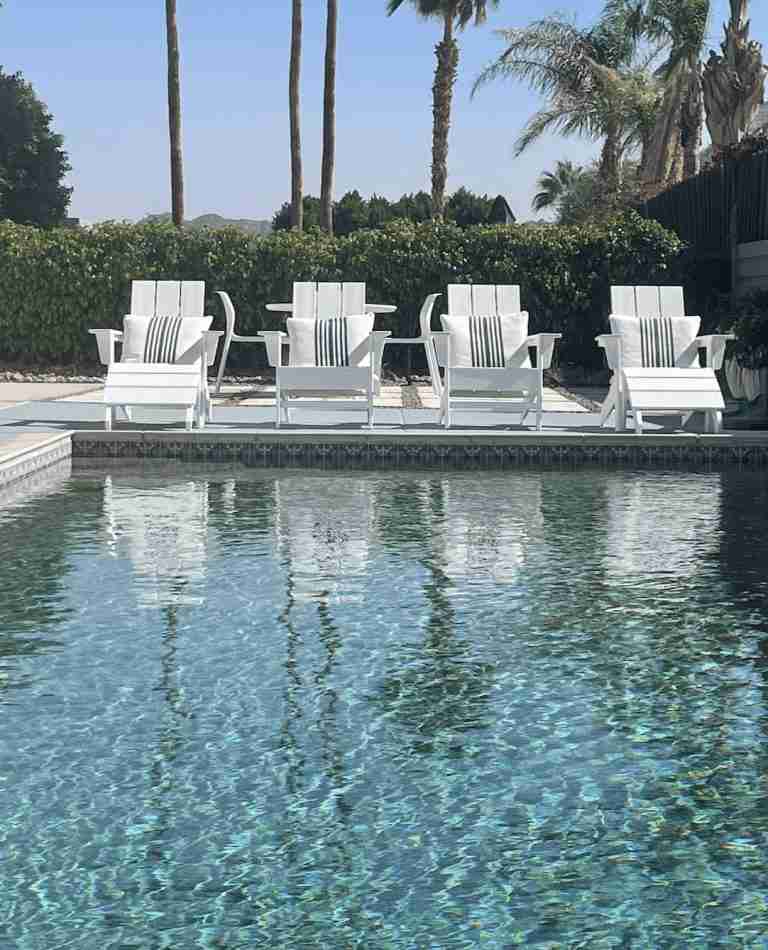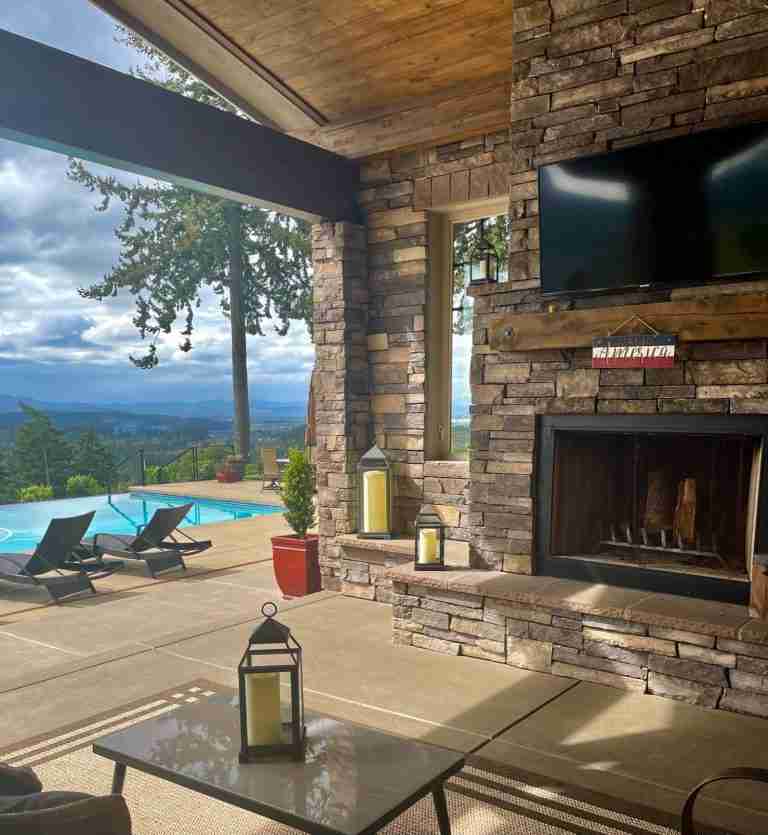6 Factors To Consider When Buying Drapes/Curtains
Whether you’re looking to update a room, provide privacy, or looking for ways to add elegance and eye candy to your home, drapes and curtains are what you need.
Think of window coverings as the eyebrow and eyelashes for your windows. It’s the finishing touch to a room it’s the jewelry that finishes the look and style.
What is the difference between drapes and curtains?
So what is the difference between curtains and drapes, you ask? Good question! The best way to describe the differences is that drapes are lined, sometimes with a heavier fabric that blocks outside light when needed.
Drapes (also known as draperies) are long enough to reach from the top of the window, flowing down and touching the floor. Drapes usually consist of heavier luxury materials such as linen, damask, silk, or velvet.
Drapes are sold in panels, and curtains are usually sold in pairs. Most stores sell curtains as opposed to drapes.
Drapery fabric usually comes in solid colors, not patterns. On the other hand, curtains come in a broader range of colors, patterns, and textiles, making them a popular choice for any room in the home.
Due to their sheerer nature, curtains are less effective at blocking out light, which is why people tend to pair them with blinds or shades or use them in spaces that don’t require a blackout effect.
Drapes and curtains are often used interchangeably, but there are subtle differences. Curtains are typically lighter and more sheer, providing privacy and filtering light. Drapes, on the other hand, are heavier, lined, and have a formal appearance. They offer better insulation, light blocking, and a more dramatic aesthetic.
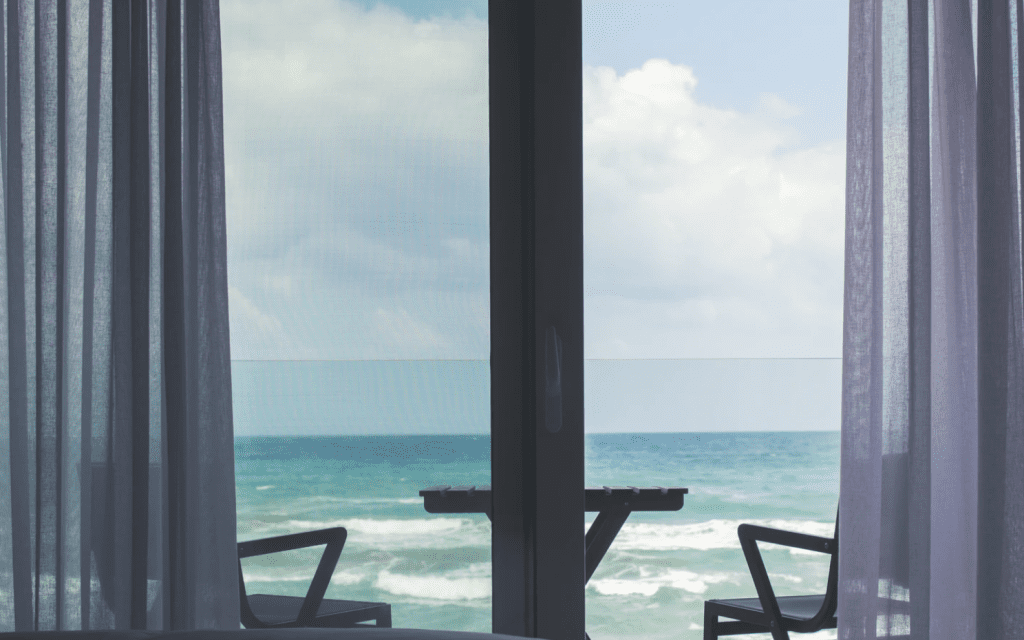
What to Consider When Planning To Install Drapes:
1. Type of Material
Curtains and drapery panels come in a variety of fabrics. Most common are cotton, linen, polyester, blend (flax-linen) velvet and silk. It depends on the look you are going after. Velvet curtains feel plush and polished; they also help block cold, heat and light, and dampen noise. In addition to thinking about the overall look that you want for your windows, keep in mind the amount of light that will pass through. Heavier, opaque fabrics will keep out more light than lighter and more sheer fabrics.
2. Levels Of Light Controls
1. Sheer – low light filter.
Sheers make a room feel light and bright, but give a finished look and touch of privacy.
Use a double rod to layer sheers under heavier curtains for day-to-night and season-to-season versatility.
2. Semi-Sheers-
A bit more private than sheers but still pretty see-through; semi-sheers are great in communal rooms or over shades in a bedroom or bathroom. Linen’s textured weave feels casual yet tailored and filters just the right amount of light.Casual and easy to clean, cotton panels keep rooms feeling bright and airy.
3. Unlined –
Medium-light filtering
4. Lined –
Higher light filtering.
5. Blackout –
Filters all light (like in hotels) Blackout linings can make any fabric opaque for privacy and light-blocking.
6. Color-
Look window coverings that go with your timeless wall colors.
3. Types Of Hanging Methods
The type of hanging method you choose also depends on the look you are going after.
· Rod pocket
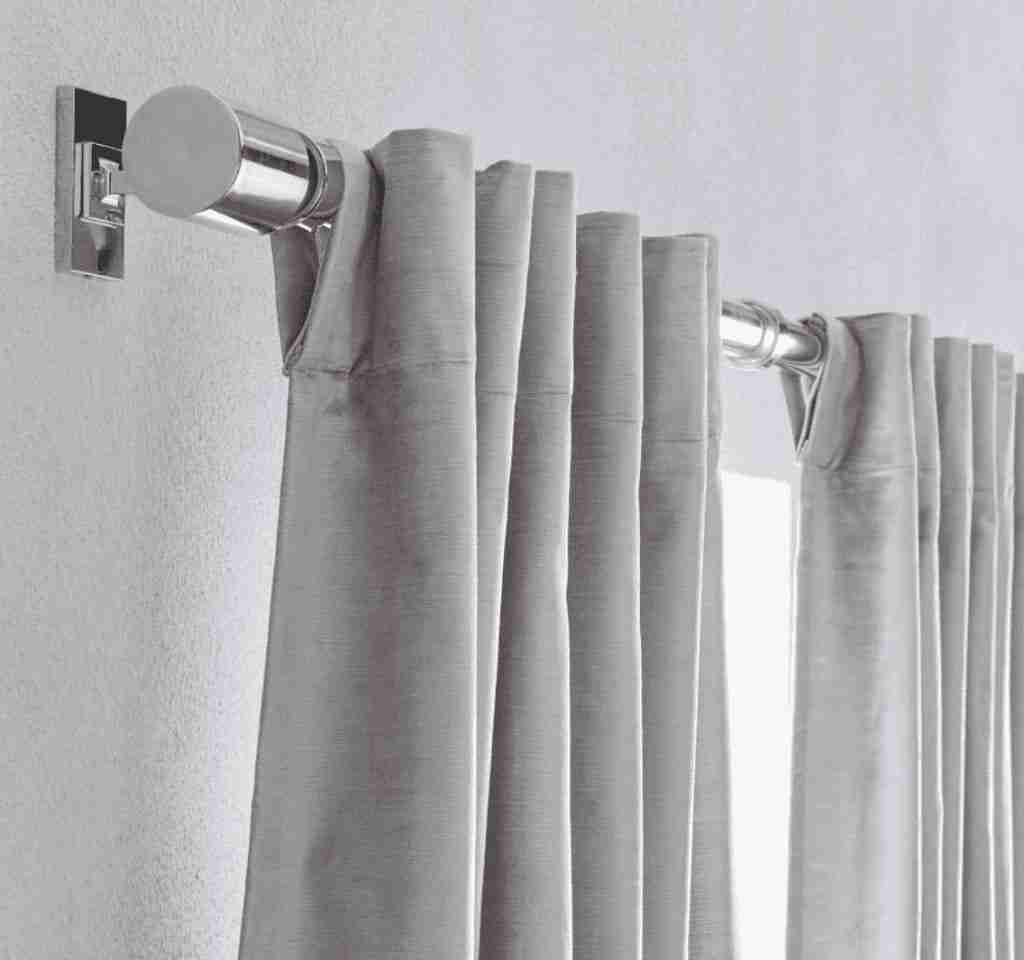
· Grommets-
Grommeted drapes are more relaxed. I used grommeted drapes in my son’s bedroom.
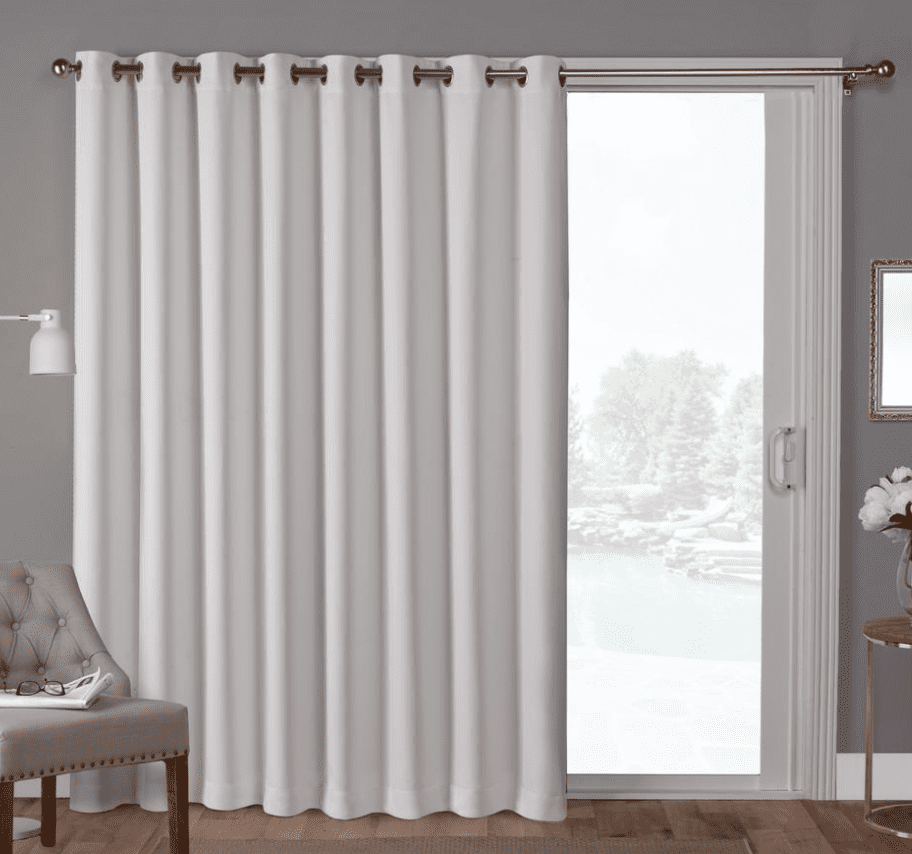
· Hidden Tabs / Back
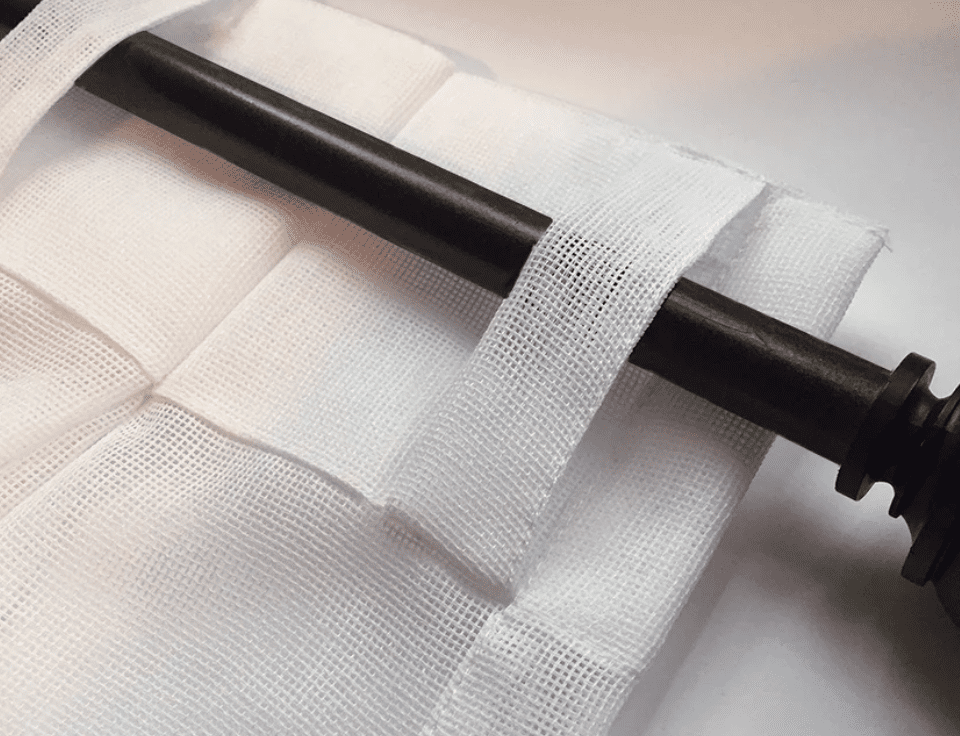
Tabs-
Tabbed drape is more casual and used most often on outdoor curtains.
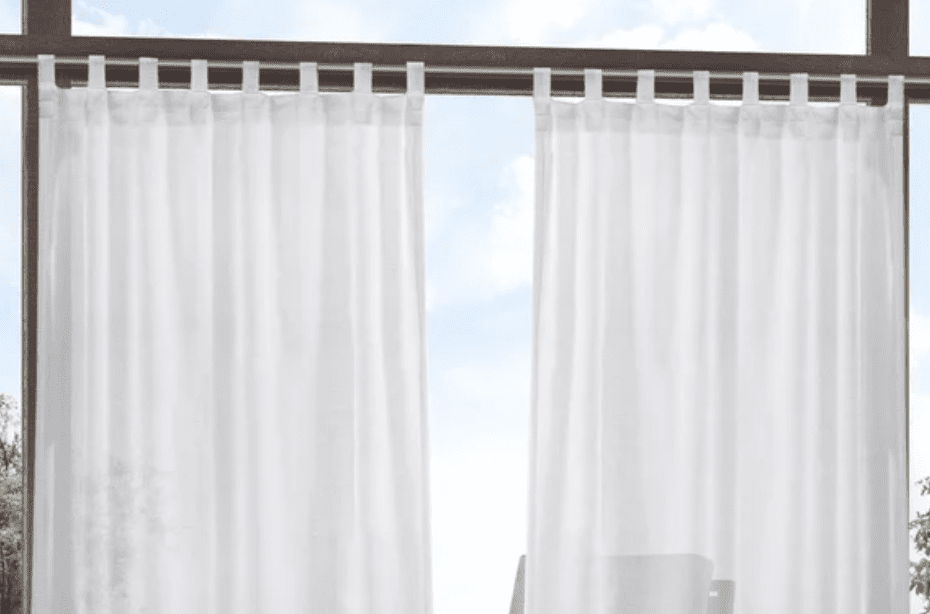
· Rings with clips-
See the below image of rings with clips that hold the drape in place.

4. Window Headers and Pleats
Let’s talk pleats!

- Pinch pleat is the most common style. It is a series of equally spaced single, double, or triple pleats pinched in the center, forming fans above and below the pinch. The header of this type of pleat is permanently gathered.
- Tie-top: This is when the curtains are attached to the poles by tying bows or knots at the top. They’re great for evoking a bohemian, romantic, or laidback atmosphere.
- Goblet pleat is like a triple-pinch pleat, except the pinch’s pleating is embellished with a stiffening paper or card to form a wine glass silhouette.
4. Pencil pleats are single thin pleats formed in neat, taut folds.

5. Ripple Fold: Usually installed on a track, this type of header makes curtains super easy to open close, and then the smooth flow of the folds makes them a modern yet classic look.
6. Cartridge pleats are single pleats that are spaced more widely than regular pinch pleats, and also rounded at the top.
7. Tuxedo pleats are larger pleats normally hung on a decorative rod to create contemporary and formal flair.
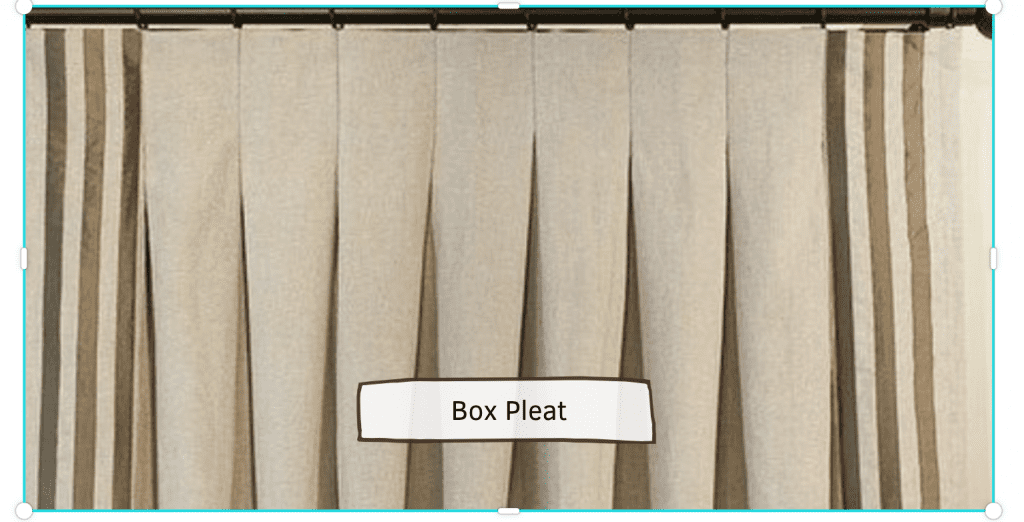
8. Box Pleat: More formal and classic, the box pleat forms more angular, clean, and wide pleats. The specific sewing involved requires precise measurements, so make sure to do your research beforehand
5. Length Of Drapes
There are five standard curtain lengths: 63 inches, 84 inches, 95 inches, 108 inches, and 120 inches. How long you go depends on the height of your and ceilings and windows. The length of your drapes is really important.
Nothing is worse than drapes that are too short. It reminds me when people where there pants several inches too short.. not a good look!
Consider the height of the curtain rod right above the window. It is recommended that curtain rods are hung about 3-5″ down from the ceiling. This will make the room appear larger and the drapes a focal point.
Length of drape depends on how formal, modern, or casual the room is. For a romantic, formal, or elegant look, a drape could puddle on the floor. Puddle can vary to slightly (3-4″) or extreme puddle (5-10″). For a more casual or modern look the drape would just meet the floor.
6. Width Of Drapes
Consider how wide you want to hang your drape panels. This will depend on how wide to install your curtain rod. In most cases, you will want to hang the curtain rod brackets about 8-10″ out from each side of the window.
Okay, now that you know what to consider, it’s time to figure out if you want to have your drapes custom made or purchase pre-packaged drapes from a box store. So many choices.
I love hand made draperies… Who wouldn’t right? If you are looking for an affordable custom drapes that will make your guest go “wow” you will want to read this post here.
Shop Custom Drapes from my gal, at AD Couture Home ….click here.
And …
For Store Bought Drapes- These drapes are great options below………….
Affiliate links provided for your shopping pleasure.
Most Frequently Asked Questions About Curtains and Drapes
Q. Can I mix different patterns and colors in my curtains and room decor?
A. Absolutely! Mixing patterns and colors can add depth and personality to your space. To ensure a harmonious look, choose patterns with complementary colors and different scales. Start with one dominant pattern, then layer in smaller patterns and solids. Don’t be afraid to experiment – just maintain a cohesive color palette.
Q. How can I make my windows appear larger using drapes or curtains?
A. To create the illusion of larger windows, hang curtains or drapes higher and wider than the actual window frame. This draws the eye upward and outward, making the windows seem larger. Using floor-length drapes also elongates the space. Choose light colors and avoid heavy patterns to maintain an airy feel.
Q. What type of fabric should I choose for my drapes or curtains?
A. The fabric choice depends on the style and functionality you want. Lighter fabrics like linen or sheer materials filter light and provide a breezy feel. Heavier fabrics like velvet or brocade offer insulation and opulence. Consider the room’s purpose – opt for lighter fabrics in living spaces and heavier ones in bedrooms for better light blocking and privacy.
Q. How can I keep my drapes and curtains looking fresh and clean?
A. Regular maintenance is key. Vacuum curtains with a brush attachment to remove dust. Depending on the fabric, you can also gently machine wash or dry clean them. To prevent fading, keep curtains out of direct sunlight. Rotate them periodically to ensure even wear.
Q. Can I install drapes or curtains myself?
A. Yes, you can! Installing drapes or curtains is a DIY-friendly project. Measure your windows accurately, choose the appropriate curtain rod or track, and follow installation instructions. If you’re uncertain, enlist a friend to help or hire a professional for a polished finish.
And there you have it, dear decor enthusiasts! Your questions about drapes and curtains have been answered. May your windows always reflect your style and bring comfort to your spaces.




